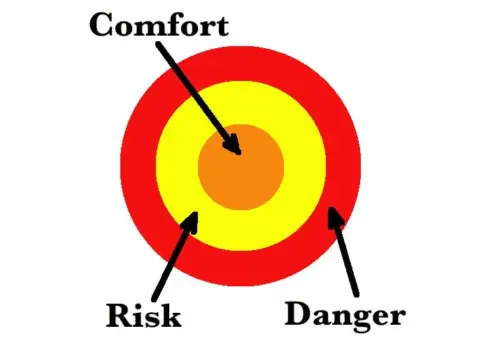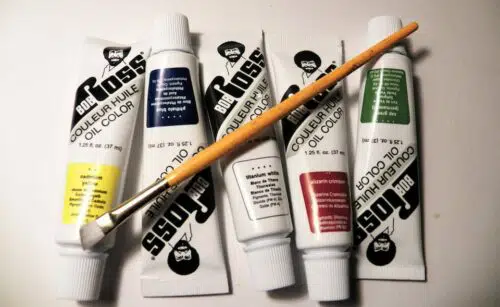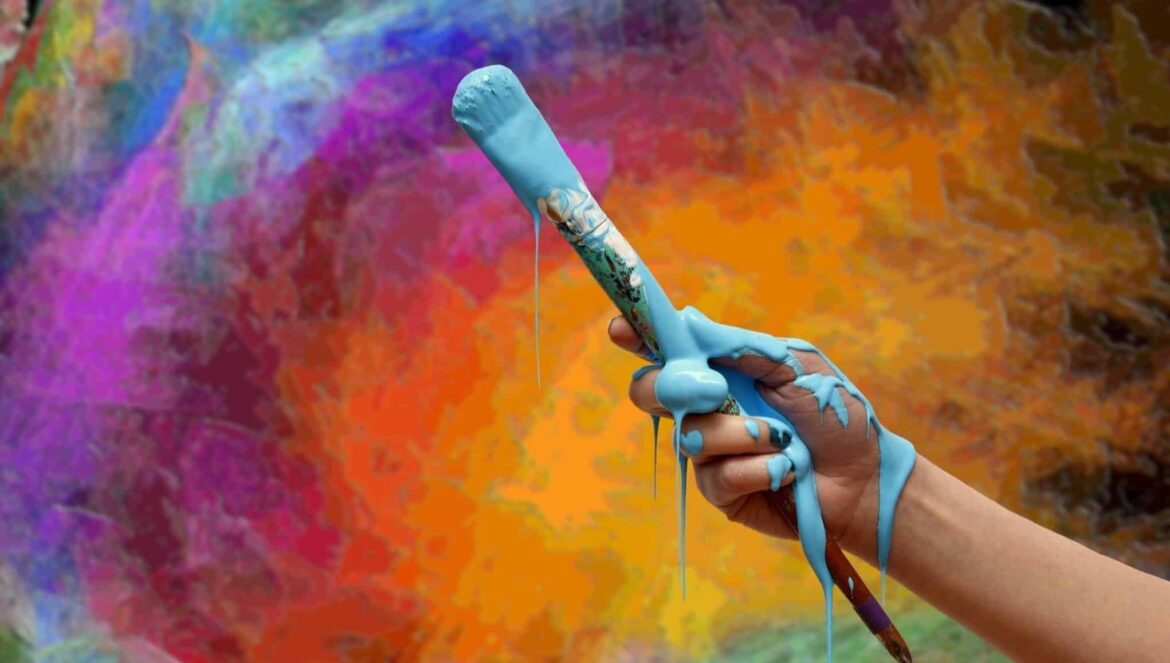Table of Contents
Why gifted students are so reluctant to make mistakes When I am sitting and flipping through the television channels, there are a few things that cause me to pause. One is the movie A Few Good Men. I always stop when I come across a baseball game too. The third thing that will make me stop and pay attention is the show The Joy of Painting. And not only will I stop and watch for a few minutes, I will sit and watch transfixed until the painting is done a half hour later. My wife often times comes downstairs and finds me in a zombie-like state, staring at the screen.
When I am sitting and flipping through the television channels, there are a few things that cause me to pause. One is the movie A Few Good Men. I always stop when I come across a baseball game too. The third thing that will make me stop and pay attention is the show The Joy of Painting. And not only will I stop and watch for a few minutes, I will sit and watch transfixed until the painting is done a half hour later. My wife often times comes downstairs and finds me in a zombie-like state, staring at the screen.
Why this is of interest is I do not like painting nor do I partake in it. Then why do I so intently watch someone showing people how to paint when I don’t like painting myself? The answer is Bob Ross. Bob Ross was the host of The Joy of Painting during its ten-year run. He looked like my Uncle Tom with his beard and his outdated perm that formed a perfect curly halo around his head. He had a soothing, sweet natured voice that was always reassuring. I think the most important aspect of Bob Ross’ style was that he welcomed mistakes. If he were to misplace a brushstroke, he would simply say “we don’t make mistakes. We just have happy accidents.”
 He didn’t always seem to have an exact plan when he was painting. Sure, he knew he was doing a landscape of a mountain or a sunset, but he always allowed himself some wiggle room should he make a mistake. He would say “we don’t really know where this goes and I’m not sure we care.” I would be amazed by the fact that he would make an askew paint line, a blotch, or a discoloration, and turn it into something beautiful like a mountain, a cloud, or his favorite, a tree. He actually revelled in mistakes because they were just an opportunity to create something else. He once said “ever make mistakes in life? Let’s make them birds. Yeah, they’re birds now.” He encouraged these happy accidents because that was where most of the best work was done. He would tell the audience “don’t be afraid to go out on a limb because that’s where the fruit is.”
He didn’t always seem to have an exact plan when he was painting. Sure, he knew he was doing a landscape of a mountain or a sunset, but he always allowed himself some wiggle room should he make a mistake. He would say “we don’t really know where this goes and I’m not sure we care.” I would be amazed by the fact that he would make an askew paint line, a blotch, or a discoloration, and turn it into something beautiful like a mountain, a cloud, or his favorite, a tree. He actually revelled in mistakes because they were just an opportunity to create something else. He once said “ever make mistakes in life? Let’s make them birds. Yeah, they’re birds now.” He encouraged these happy accidents because that was where most of the best work was done. He would tell the audience “don’t be afraid to go out on a limb because that’s where the fruit is.”
This is what we need to create in our classroom for our students. We need to create an environment where students are comfortable going out on a limb. Where their mistakes do not count against them but instead, allow them to learn even more than if they had gotten it correct the first time. Too many classrooms do not allow children to make mistakes. The grade is a summative one and the child either gets it or they don’t with no chance to correct what they didn’t learn. As we learn the longer we are around this planet; the mistakes are where the best learning takes place. There needs to be a space for children to reflect on their mistakes and learn from them without being punished with a poor mark.
This is especially true with gifted students who are terrified to make mistakes. They have were often the smart ones in the class, the ones who had all the answers. When that gifted student gets older though and the answers don’t come to him as easily, he is going to be reluctant to try and take any risks for fear of being wrong. To make a mistake would be horrible so rather than challenge himself, he is going to go the easy route so that he can be correct, not so he can learn.
Every once in a while, a new teaching concept will come along to mark the sign of the times. One that has been gaining some traction is the concept of FAIL. Instead of the term meaning that the student was not successful or that they were wrong, FAIL stands for:
First
Attempt
In
Learning
First attempt in learning is a concept where students are allowed to rework their work or give it another try until they understand it. This is mastery learning. The child gets to re-do it until they learn it. Imagine that.
 By allowing students the chance to revise their work, they are going to be more willing to take risks and try new things. This is where the greatest learning takes place. I have used this visual in a couple of my books, but it does an effective job of showing where the optimum learning takes place:
By allowing students the chance to revise their work, they are going to be more willing to take risks and try new things. This is where the greatest learning takes place. I have used this visual in a couple of my books, but it does an effective job of showing where the optimum learning takes place:
When gifted students are not allowed to make mistakes, they usually want to stay in the comfort zone, covering material they already know well or that comes easily to them. While this produces “correct” work, it does not produce work that is going to allow these high ability students to stretch themselves and actually learn. The classroom needs to be a place where happy accidents can occur in order for students to take a risk. It is when students are trying something new or out of their comfort zone where the best learning takes place. The closer students can get to the danger zone, the deeper the learning. The teacher of gifted students needs to be able to push and challenge these children to take this risk. You cannot do this if the student does not feel comfortable taking these risks.
There are other ways teachers can make their classrooms safe places where students are encouraged to make mistakes for the sake of learning. In addition to reworking, do students have a voice in the classroom? This voice comes in many forms, from the fact that they are given choices, to the ability to ask questions without feeling like they are going to be ridiculed by other students or even the teacher, to taking part in the evaluation of their work.
 There are those who will argue that by allowing students to rework their mistakes, you are just teaching them not to try their best the first time. That in real life, you sometimes only get one shot and children need to learn this in school. But isn’t the point of school that the student learns it? Not that they got it correct the first time?
There are those who will argue that by allowing students to rework their mistakes, you are just teaching them not to try their best the first time. That in real life, you sometimes only get one shot and children need to learn this in school. But isn’t the point of school that the student learns it? Not that they got it correct the first time?
So take a page from my old friend Bob Ross and make sure your classroom is one where students can have happy accidents in order for them to experience the joy of teaching. >Author
Todd Stanley is the author of several education books including Project-Based Learning for Gifted Students and Performance-Based Assessment for 21st-Century Skills, both for Prufrock Press.
Additionally, he wrote a series of workbooks for them entitled 10 Performance-Based Projects for the ELA/Math/Science Classroom. He wrote Creating Life-Long Learners with Corwin Press and is a regular contributor of blogs to Corwin Connect which can be accessed at https://corwin-connect.com/author/toddstanley/.
You can find out more about Todd at MyEdExpert.com and you can follow him on Twitter.
Further Reading
- Ed Week – 14 Things Gifted Students Want Teachers to Know
- Edutopia – It’s a Mistake Not to Use Mistakes as Part of the Learning Process
- Keep ‘Em Thinking – Turning mistakes into learning opportunities


